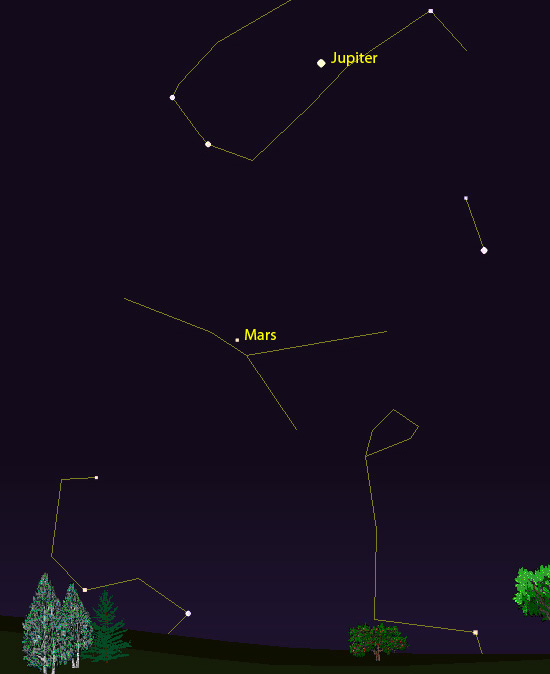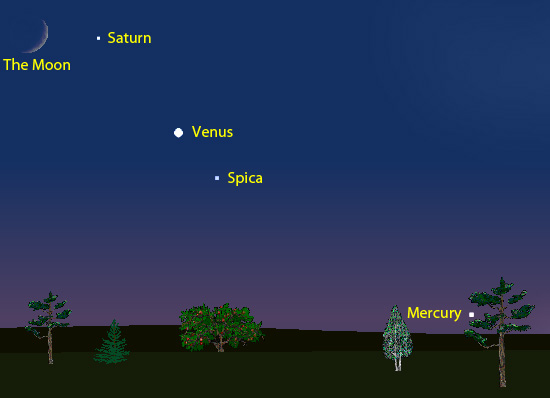If you’re an early bird, you can see the planets Mars and Jupiter in the eastern sky at sunrise this month! If you have a telescope, consider looking at Mars during the mornings of September 8 and 9 as the red planet moves through the famous “Beehive Cluster” of stars in Cancer. Both Mars and Jupiter will appear as bright points of light in the eastern sky before sunrise.

September is the last time this year to get a good look at the beautiful, ringed planet Saturn, which has moved into the Name A Star Live constellation Libra. You can use the Moon to find this astronomical jewel, and use just about any telescope to see its rings!

Saturn is an excellent telescopic object this summer. For those of you in the northern hemisphere of Earth (e.g., North America, Europe, Japan) Saturn will appear above your western horizon after sunset. For those of you in the southern hemisphere (e.g., Australia, New Zealand, South America — where it is winter, by the way) Saturn will appear above your west-northwest horizon after sunset.

Finding your star in the night sky
Stars are located within constellations, which are just areas of the night sky. Scorpius, Aries and Taurus are examples of constellations. Your Name A Star Live Star Certificate displays the name of your constellation. You can use our online World Constellation Guide to determine if you can see your constellation during the evening hours (between sunset and midnight). Of course, you’ll need a telescope to see your star. But you can see your constellation without the use of a telescope. You can also find your constellation by using our Virtual Planetarium™ astronomy software. A planisphere is another useful device.